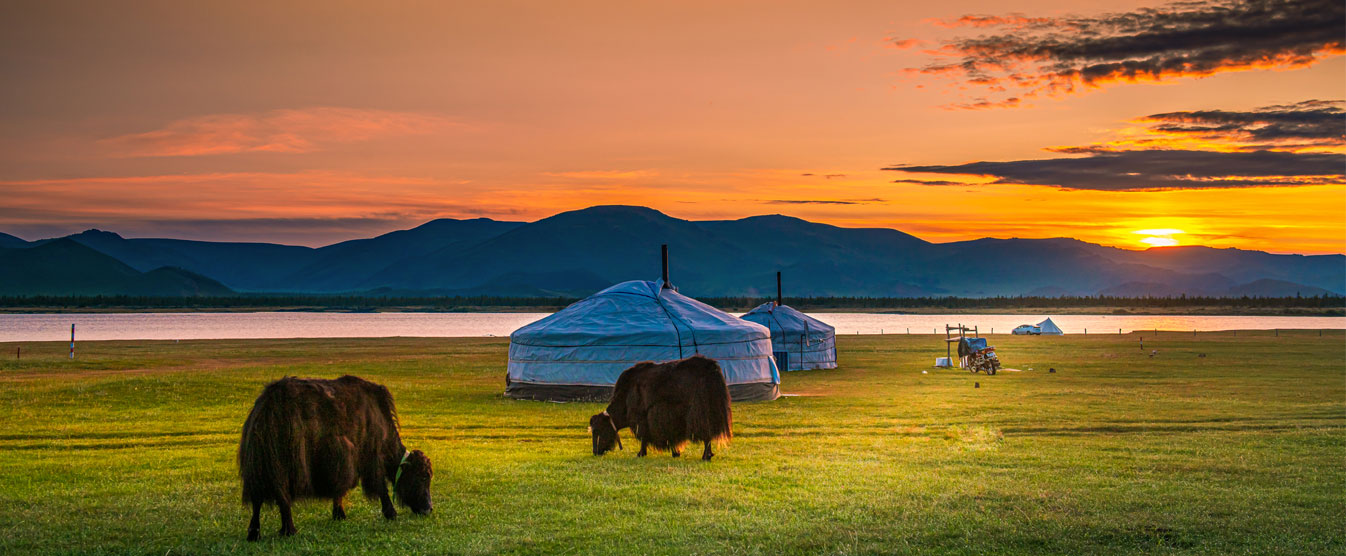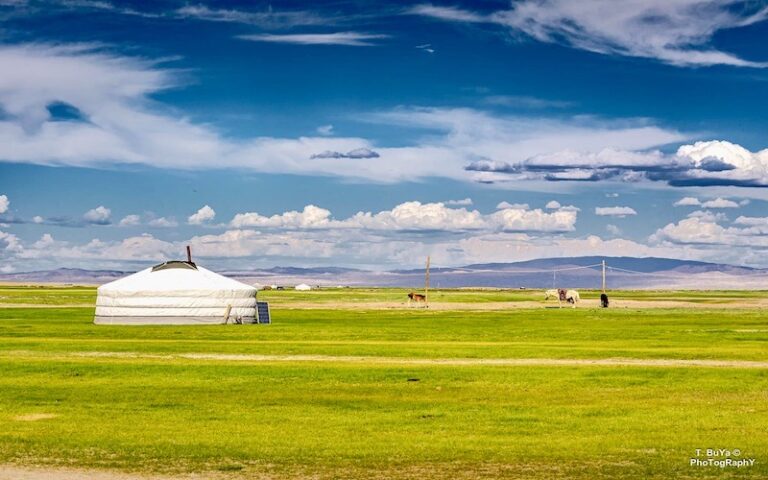Many travelers search for authentic experiences in Mongolia. They imagine wide open landscapes, traditional gers, and nomadic families living close to nature. What most people do not expect is how deeply personal the experience can become.
This 6-day Mongolia Nomadic Highlights journey is designed for travelers who want more than sightseeing. It focuses on real interaction with nomadic families, daily life on the steppe, and slow travel through Central Mongolia.

From Ulaanbaatar to the Mongolian Steppe:
The journey begins in Ulaanbaatar, Mongolia’s capital, and quickly moves into the countryside. Within a few hours, the city disappears and the landscape opens into grasslands, river valleys, and distant hills.
Along the way, travelers see gers scattered across the steppe, herds of horses and sheep, and families moving with quiet purpose. This transition is often the first moment when travelers feel they have truly arrived in Mongolia.
Staying With A Nomadic Family in Mongolia:
One of the highlights of this 6-day trip is staying overnight with a nomadic family in the Orkhon Valley. This is not a tourist camp or a staged experience. It is a real family home.
Guests are welcomed into the ger, offered milk tea, and invited to share meals and conversations. Daily routines continue as usual. Animals need care, fires need tending, and life moves at its natural pace.
Language is not a barrier. Communication happens through gestures, smiles, and simple translations from the guide. Many travelers say this first evening with a nomadic family is the most memorable part of their entire Mongolia trip
Experiencing Daily Nomadic Life:
Over the following days, travelers take part in everyday activities. This may include helping with animals, learning how dairy products are prepared, or walking together across open grasslands.
There is no fixed schedule for these moments. Nomadic life follows nature, weather, and seasons. This flexibility allows travelers to experience Mongolia in a way that feels natural rather than planned.
Short horse rides, camel rides, and walks through the Orkhon Valley are included, not as adventure activities, but as part of how nomads move through their land.
Why Small-Group Travel Matters in Mongolia
This Mongolia nomadic experience is offered in small groups to preserve its authenticity. Smaller groups allow for real interaction with families, quieter evenings, and deeper cultural exchange.
Most travelers on this trip join as solo travelers, yet the shared experience creates a strong sense of connection. It is common for guests to arrive alone and leave with friendships formed through shared moments rather than constant conversation.
Who This 6-day Mongolia Trip Is Best For?
This trip is ideal for travelers who want an authentic cultural experience in Mongolia. It suits those who value simplicity, patience, and meaningful connection over luxury or fast-paced travel.
It may not be suitable for travelers looking for high-end accommodation, constant internet access, or tightly timed itineraries. Nomadic life is unpredictable, and this journey embraces that reality.
What Makes This Mongolia Nomadic Highlights Trip Different
Many Mongolia tours focus on covering large distances or ticking off famous landmarks. This journey focuses on people.
Travelers return with memories of shared meals, quiet mornings, and moments of understanding that go beyond words. It is an experience that often reshapes how people think about travel, comfort, and connection.
Upcoming Departures and Invitation:
The 6-day Mongolia Nomadic Highlights trip has a few guaranteed small-group departure for 2026 summer season. Group size is limited to keep the experience personal and respectful for the nomadic families involved.
If this style of travel resonates with you, you can view the full itinerary and request details for your interested departure. If you are unsure whether this journey fits your travel style, you are welcome to reach out and ask. We are always happy to help you decide.
SUBSCRIBE OUR MONGOLIA TRAVEL BLOG
REAL NOMADIC WILDERNESS IDEAS TO SOLO ADVENTURER
Sign up to our Mongolia travel blog & discover the travel experiences you will really want to try!

























